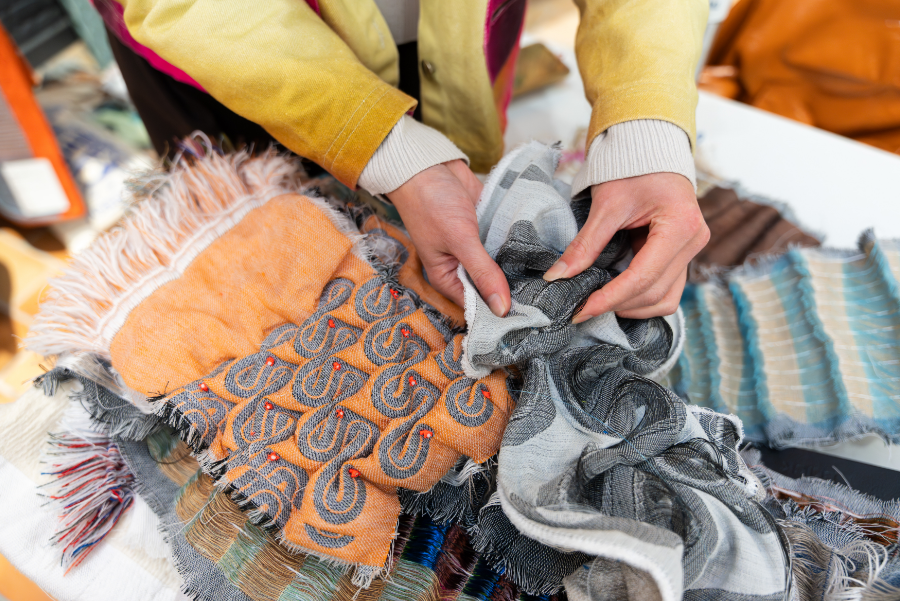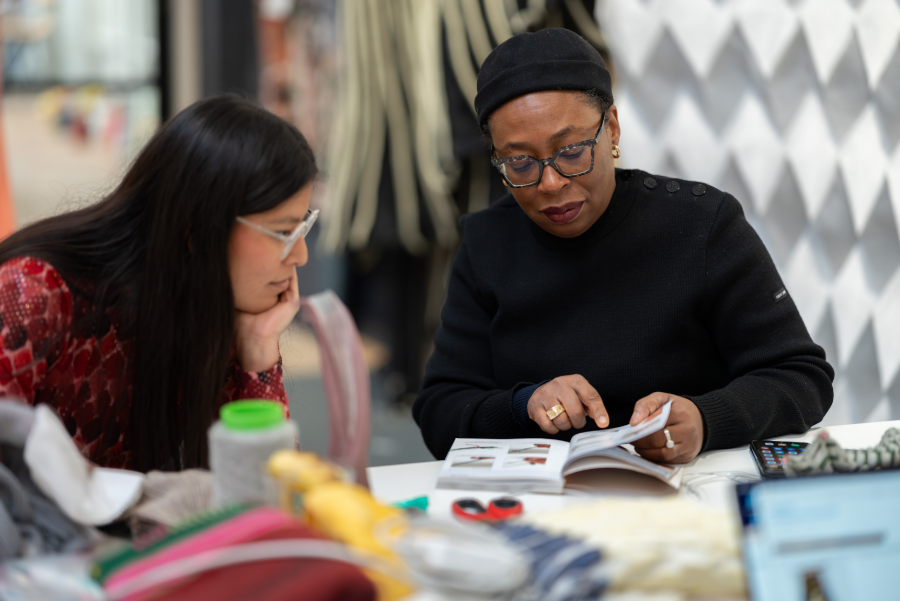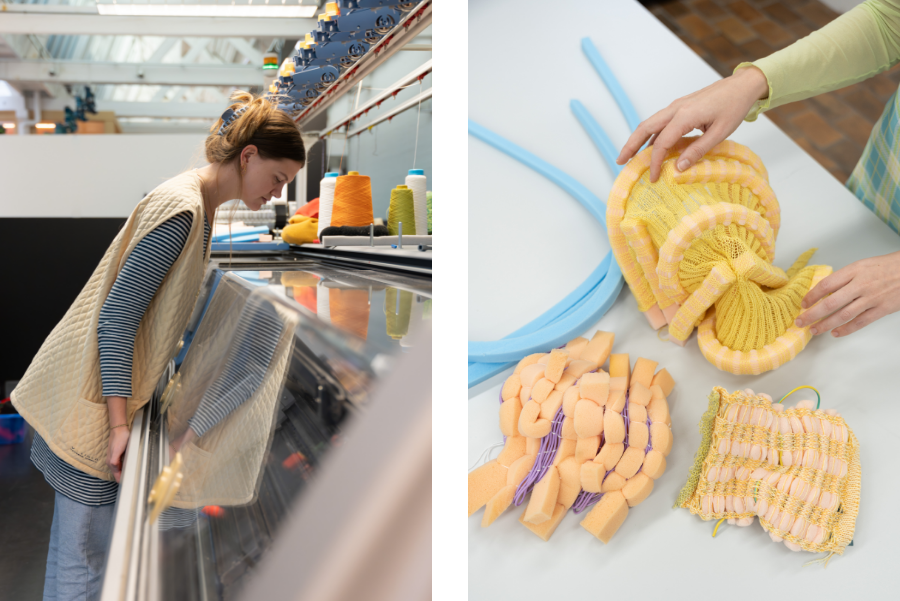The first results of the Advanced Textile Program were presented in early December. Eight young designers showed their creations inspired by the machinery and people in and around the TextielLab. Their work will be exhibited in the museum next spring.
The Advanced Textile Program (ATP) offers artists and designers at the start of their careers the unique opportunity to experiment with techniques, materials and machines in the TextielLab. During this ten-week talent development programme, participants are given access to all the museum’s facilities, including a two-week work period in the lab. The flat knitting machine, circular knitting machine and various looms are available to them during those two weeks, as are the product developers with their extensive knowledge. Add in coaching from artist Otobong Nkanga and Kvadrat leaders Stine Find Osther and Nina Lolle, and the results are impressive, as demonstrated by the final presentation on 6 December.

Experimenting with various materials and techniques. Photo: Patty van den Elshout
Mentorship
“It was very special to follow the journey of these eight creative minds,” says Otobong Nkanga. This is the second year she has been a mentor for the programme, which she says offers her a great glimpse of the future through a new generation of makers. She has a long history with the TextielLab herself, using the lab, library and museum collection to develop her own unique work. Based on that professional experience and her strong conceptual vision, she supports and inspires the ATP participants on their creative journey.
Collaboration
“The inspiration was mutual,” says Nkanga, reflecting on the past few weeks in the lab. “The level of experimentation was high. It’s fantastic to see how these eight designers think and what they do with their ideas. I learn from that as well.” As a mentor, she encourages the participants to go a step further by showing them different perspectives at the conceptual level and stimulating substantive discussion. She not only helps them with the creative process of choosing materials and colours, but also with the practical aspects of organising their work. The emphasis during this edition of the programme was on collaboration, both with each other and with product developers and industry partners. “Learning to work together is extremely valuable,” says Nkanga. “Sometimes you have to sacrifice a little bit of yourself in order to grow. Innovation occurs when creative minds come together.”

Collaborating with Otobong Nkanga in the Sample Studio. Photo: Patty van den Elshout
Pressure cooker
The online presentation demonstrates what this exchange of ideas, knowledge and experience can lead to. Although the slides and videos only show a fraction of the participants’ work, they give a good impression of the enormous creative power that has been generated here in a kind of pressure cooker. There are striking overlaps when it comes to sculptural thinking and playing with the balance between manual and mechanical work. Many participants had never used industrial machines before. The transition from the smaller manually operated machines in their own studios to the professional machinery in the TextielLab inspired several makers to explore the tension between the two.
“It’s fantastic to see how these eight designers think and what they do with it.”
Otobong Nkanga
Hand in the machine
For example, designer Ida-Simone Brerup literally put her hand in the machine as a way to question mass production processes. “I had the uncontrollable urge to interrupt that speed with manual interventions,” she explains. In her video, she can be seen inserting pieces of polyether foam between the teeth of the paused flat knitting machine with pliers. The foam is neatly incorporated into the fabric – to the relief of the designer and product developer. Together, they wrote a programme that pauses every five rows and then knits the one row with foam extra slowly. Brerup says it was a new experience as a maker to have to hand over part of the control to the machine and product developer. “The collaboration with the product developers was the biggest surprise for me in the lab. Their knowledge is incredible, and I’ve become completely fascinated by how they make that translation from artist to computer and machine.”

Designer Ida-Simone Brerup in the lab. Photo: Patty van den Elshout / Knitted and woven samples by Brerup. Photo: Patty van den Elshout
Exhibition in April
All the participants stress in their presentation that their creations are still works in progress, and all eight will continue to develop them in their own studios in the coming months. After this intensive period in the lab, Nkanga advises the participants to look at their findings again with fresh eyes before deciding on the next step. The results will be exhibited in the TextielMuseum next spring.
Text: Willemijn de Jonge